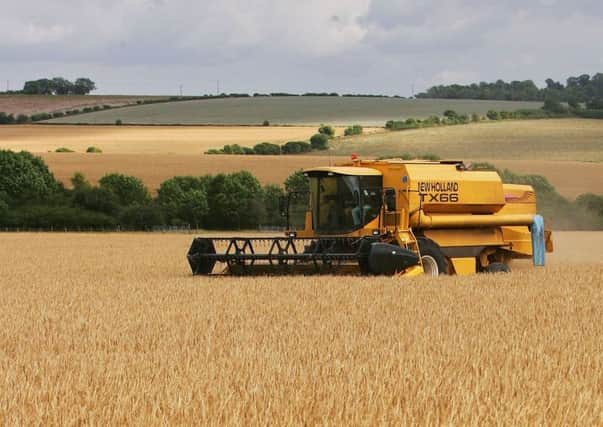Genome map to play '˜key role' in barley breeding
This article contains affiliate links. We may earn a small commission on items purchased through this article, but that does not affect our editorial judgement.


That was the view of leading plant scientist Professor Robbie Waugh, of Scotland’s James Hutton Institute and the Division of Plant Sciences at the University of Dundee, who spearheaded the sequencing work which is published in the prestigious science journal Nature today.
• READ MORE: Laureate looks to break in to malting barley market
Advertisement
Hide AdAdvertisement
Hide Ad“Armed with this information, breeders and scientists will be much better placed to deal with the challenge of effectively addressing the food security agenda under the constraints of a rapidly changing environment,” said Waugh.
Barley is the second most important crop in UK agriculture, and malting barley (some 30 per cent of the total) underpins the beer and whisky sector, worth more than £20 billion to the UK economy.
“The genome provides a better understanding of malting genes, as well as the processes of domestication, local adaptation and modern breeding that have been critical in shaping current varieties,” said Waugh.
The work was carried out by a ten-nation scientific consortium which also included the International Barley Genome Sequencing Consortium (IBSC), Earlham Institute and the European Bioinformatics Institute and workers in Germany, the United Kingdom, China, Australia, Czech Republic, Denmark, Finland, Sweden, Switzerland and the United States.
The genome sequence of the crop has revealed detailed information on the location, structure and function of specific genes, providing a key tool for breeding projects aimed at crop improvement.
With more than 39,000 genes, scientists said that the barley genome is almost two times larger than the human genome and much more complex – with 80 per cent of it composed of highly complex repeat structures.
Domesticated between 10,000 and 12,000 years ago in the Middle East, barley has since spread across all temperate regions to become the world’s fourth most important cereal crop, both regarding area of cultivation and in quantity of grain produced.
Advertisement
Hide AdAdvertisement
Hide AdBarley grain yields have more than doubled over the past 50 years, with studies revealing more than 90 per cent of this improvement can be attributed to genetics.
Digital tax plans put on ice
The farming industry allowed itself a collective sigh of relief yesterday when it was confirmed that the UK government had dropped the controversial “Making Tax Digital” proposals from its 2017 Finance Bill.
However, the reprieve from the requirements which would have forced farmers to make quarterly, online income tax returns might only be temporary.
Experts said the decision to shelve the issue until after the general election meant the scheme, which was due to hit VAT-registered businesses from 2018 and smaller businesses from 2019, will now be delayed by at least a year – but were divided over whether it was likely to be scrapped altogether.
The move comes after opposition from taxpayers, business groups and senior political figures across all parties, despite the promise from HMRC that it could raise an extra £2 billion a year.
The measures had been termed ill-considered and ill-suited to the farming industry ever since the proposal to introduce them from April next year was first announced.
Commenting on their removal from the bill, NFU Scotland vice-president Gary Mitchell said: “Following intense lobbying by NFUS and other UK farming unions, this is a commonsense move that will lift the immediate fear faced by many farming and crofting businesses of having to comply with complex online tax requirements at a time when access to the necessary digital infrastructure is still missing from much of rural Scotland.”